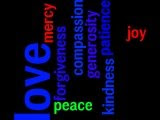Readings: Deut 11:18-32; Rom 3:21-28; Mt 7:21-27
The passage from Deuteronomy, which we just heard, is one of the most famous in Jewish life and spirituality, especially these words: "Take these words of mine into your heart and soul. Bind them at your wrist as a sign, and let them be a pendant on your forehead." These words led to some of the most recognizable features of Jewish life through the centuries—the wearing of little leather containers (Teffalin) attached to the wrist and forehead of observant Jews when they pray. The leather pouches each held a little piece of parchment on which was written part of this passage from Deuteronomy. (I have a set, from the times when I was teaching the "Introduction to Judaism course, but unfortunately they are still down in my room at St. Meinrad.) Along with the prayer shawl (Tallit) and its tassels (Tzitzit), which corresponds to another passage in the book of Numbers (15:37-40), the Teffalin were to be continual daily reminders to the Jews of their unique covenant with the Lord God—daily reminders. The same function was served by the small container (Mezuzah) placed on the door frame of the main entry to the house. It also has a small piece of parchment with an inscription inside, "The Lord Our God is One." The name of God, Shaddai, is written on the outside. Jews would touch these each time they entered or left their homes. (I have several of these too, but they also are down at St. Meinrad.) The skullcap (Kippah) is also a reminder of their special covenant with God.
The early Christians, spiritual descendants of the Jews, did the same thing, although with other objects, symbols and rituals. In place of the Mezuzah they would often inscribe a Christian symbol on their door frames—an anchor (a reference to Heb. 6:19 where Jesus is described as a sure anchor of the soul), a fish (the Greek letters of the word for fish (ichthus) form an acronym which in Greek means "Jesus Christ, Son of God, Savior), a Chi-Rho, which is a combination of the first two letters of "Christos." These served both as identification signs for Christian travelers passing through the city as well as reminders to the home owners about the basis of their Christian faith. Inside an early Christian home would frequently be found a "prayer corner," a specially designated place to pray. They took that practice from the religious culture of the Romans. Passing that "prayer spot" several times a day would be a reminder of the need for daily personal prayer in the life of the believer; often they would stop and pray there. The Byzantine Christian tradition has continued this practice through the centuries up to today. Frequently in Byzantine homes you can see where an "icon prayer corner" has been set up.
We continue the same kinds of practices today—though the practices have changed with time and culture. There are some things you just expect to see in Benedictine houses. There are always multiple statues and pictures of Benedict and Scholastica. There’s usually some cross that is distinctive to that particular house, like you have with your house. Monastic houses seem to take such special care of their cemeteries. When I was on the "retreat circuit," I used to always visit the community’s cemetery and found them very moving places. They told the story of that house in a unique way.
In our own individual lives we often have some similar visual reminders that vary with each person. Perhaps a cross, a pin, a picture, an icon corner, a special book. There are some monks at St. Meinrad that have mezuzahs on the door frames to their rooms. Others that have special holy water fonts inside their doors.
This day and this passage from Deuteronomy might be a good occasion for each of us to identify: what are the visual landmarks of my Christian faith, what are the visual landmarks of my Benedictine tradition, what are the visual landmarks of my particular house? And how faithful am I in responding to them regularly?
Sunday, March 6, 2011
Fr. Matthias Neuman's Homily for the 9th Sunday in Ordinary Time
Subscribe to:
Post Comments (Atom)




No comments:
Post a Comment